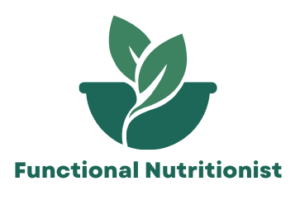Adequate nutrition is very important to maintain body health. Especially for children who are still growing. To know the proper nutrition needed, you can ask functional nutritionist.
However, each person’s nutritional needs are different. This can be calculated based on the nutritional adequacy rate which shows the average amount of nutrients needed by the body each day.

Doubtful about your and your family’s nutritional adequacy rate? Make a teleconsultation appointment with a nutrition specialist on the LinkSehat application to make sure. Failure to meet nutritional needs can cause someone to experience a condition called malnutrition.
What is Malnutrition?
Malnutrition is a disease that refers to an imbalance in a person’s nutritional intake, either a lack or excess of nutrients.
The term malnutrition covers two broader groups of disease conditions, one of which is malnutrition. While the others are overweight, obesity, and so on.
Not only children, adults are also at risk of malnutrition. Especially if the diet is irregular and there is a lack of knowledge about balanced nutrition. You can learn about the symptoms and risks of malnutrition as an early preventive measure.
Based on data from the World Health Organization (WHO), malnutrition disorders can affect people in every country. There are around 1.9 billion adults worldwide who are overweight (obese), while 462 million people are underweight. It is estimated that around 41 million children under the age of 5 are obese, while 159 million children experience stunting, and 50 million children experience wasting.
Many families are unable to provide nutritious foods such as vegetables, fruits, nuts, meat, and milk. Meanwhile, foods and drinks high in sugar and salt are easier to obtain because they are sold at low prices. This is what causes the rapid increase in the number of children and adults who experience malnutrition.
What are the Impacts of Malnutrition?
Adults with malnutrition are at risk of experiencing various health disorders that need to be watched out for. Contact a doctor immediately if you start experiencing health problems such as:
Poor wound healing process.
Decreased immune system. This condition can increase the risk of infection.
Weak muscles and decreased bone mass. This condition can cause you to fall during activities and be susceptible to fractures.
Malnutrition increases your risk of having to undergo inpatient procedures in the hospital.
What are the Causes and Risk Factors for Malnutrition?
The most common causes of malnutrition are eating too little nutritious food and an unhealthy diet. In addition, malnutrition can also be caused by a combination of physical, social, and psychological problems. The following are the causes of malnutrition quoted from the Mayo Clinic:
– Dementia. It is a disease that affects a person’s behavior and memory, causing sufferers to forget to buy groceries, forget to eat, or have irregular eating habits.
– Increasing age. As we age, there is a decrease in the ability to taste, smell, and appetite. This makes it increasingly difficult for someone to enjoy food and maintain regular eating habits.
– Experiencing depression. Sadness, loneliness, and declining health are factors that cause depression. People with depression tend to lose interest in doing anything, including the desire to eat.
– Alcohol addiction. Drinking too much alcohol can interfere with the digestive system and nutrient absorption. Alcohol abuse can also form poor eating habits, resulting in a lack of balanced nutritional intake.
– Disease. Disease or inflammation can contribute to decreased appetite and changes in the body’s ability to process nutrients from the food consumed.
– Decreased ability to eat. Difficulty chewing, difficulty swallowing, poor dental health, and limited ability to operate eating utensils can lead to malnutrition.
– Undergoing medication. Certain types of medication can affect appetite or the body’s ability to absorb nutrients.
– Diet programs that restrict certain foods. Restricting foods during a diet such as salt, fat, or sugar also contribute to inadequate eating patterns and loss of balanced nutrition.
In addition to the causes of malnutrition mentioned above, there are also causes of malnutrition that come from external factors, such as:
Economic limitations. This condition makes it difficult for adults to buy groceries and provide balanced nutrition, especially if they are taking expensive medications.
Lack of social contact. Adults who eat alone may not enjoy food as much as they used to when gathering with friends or family. Lack of social contact risks reducing appetite and interest in cooking.
How to Treat Malnutrition?
The type of treatment needed to treat malnutrition depends on the underlying cause and how severe the condition is. Your doctor may give you recommendations that you should do at home. However, severe malnutrition requires you to undergo inpatient treatment in a hospital.
Here are ways to treat malnutrition reported by the National Health Service (NHS):
- Dietary Changes and Supplements
Ask a nutrition specialist for help in creating a diet plan tailored to your condition. They may also suggest following a healthy and balanced diet, eating foods rich in nutrients, and drinking high-calorie drinks.
If these methods are not enough, you can take additional nutrients in the form of supplements. The type and dosage of supplements must be based on a doctor’s prescription.
- Using a Feeding Tube
If you have trouble swallowing, an alternative way to meet your balanced nutritional needs is to use a feeding tube. This procedure can include:
Using a tube that is inserted through your nose and down into your stomach (nasogastric tube).
Using a feeding tube that is placed directly in your stomach or intestines through the skin in your abdomen (percutaneous endoscopic gastrostomy tube).
Using a nutrient solution that is inserted directly into your blood through a tube in your vein (parenteral nutrition).
This treatment method is usually done in a hospital, but can be continued at home if your body is healthy enough.
Can Malnutrition Be Prevented?
Malnutrition can be prevented and controlled in several ways. Pay attention to your body’s health, adequate nutrition in one portion of food, pay attention to weight loss, and avoid factors that cause malnutrition. To control and prevent malnutrition early on, take the following steps:
Design a food menu. Make a healthy food menu plan carefully and pay attention to nutritional balance.
Observe your daily eating habits. Spend mealtimes together at home or during meals in the hospital to observe eating habits. Don’t forget to also pay attention to the types of food eaten and the portions.
Monitor weight gain and loss. Check your weight at home regularly and make weekly notes.
Monitor the types of medications consumed. Write down all types of medications, the reasons you are taking them, the dosage, the schedule for taking the medication, and possible side effects that may contribute to malnutrition.
Increase physical activity. Do regular daily exercise, even if it is light movement. Increasing physical activity can stimulate appetite and strengthen bone and muscle mass.








